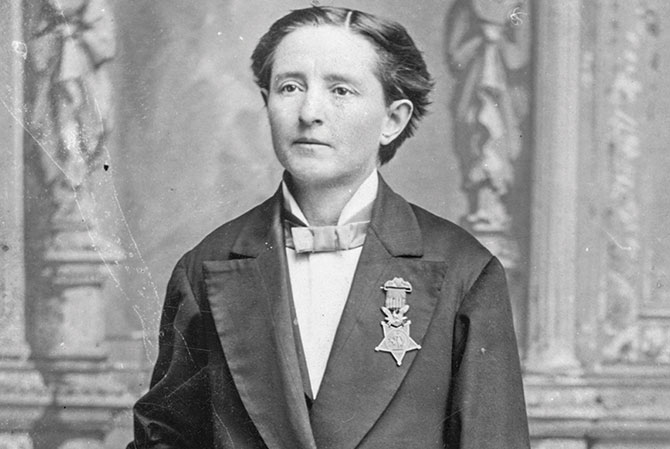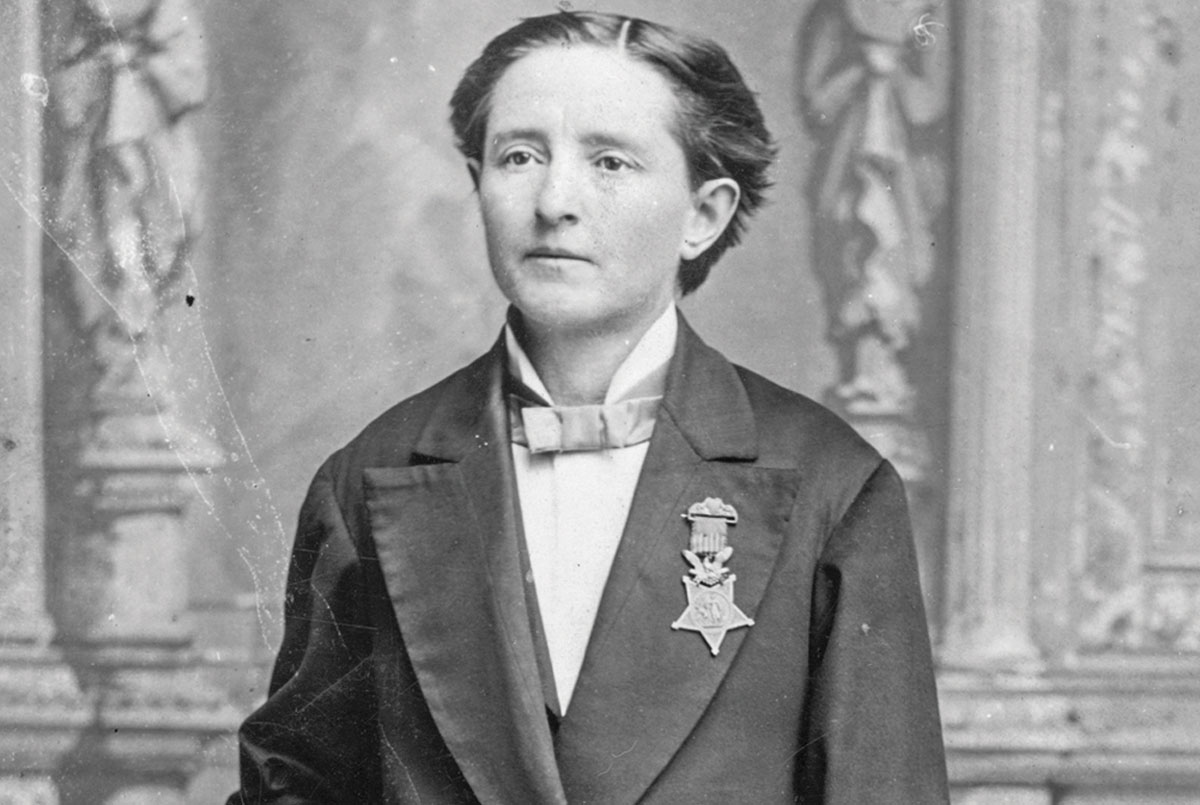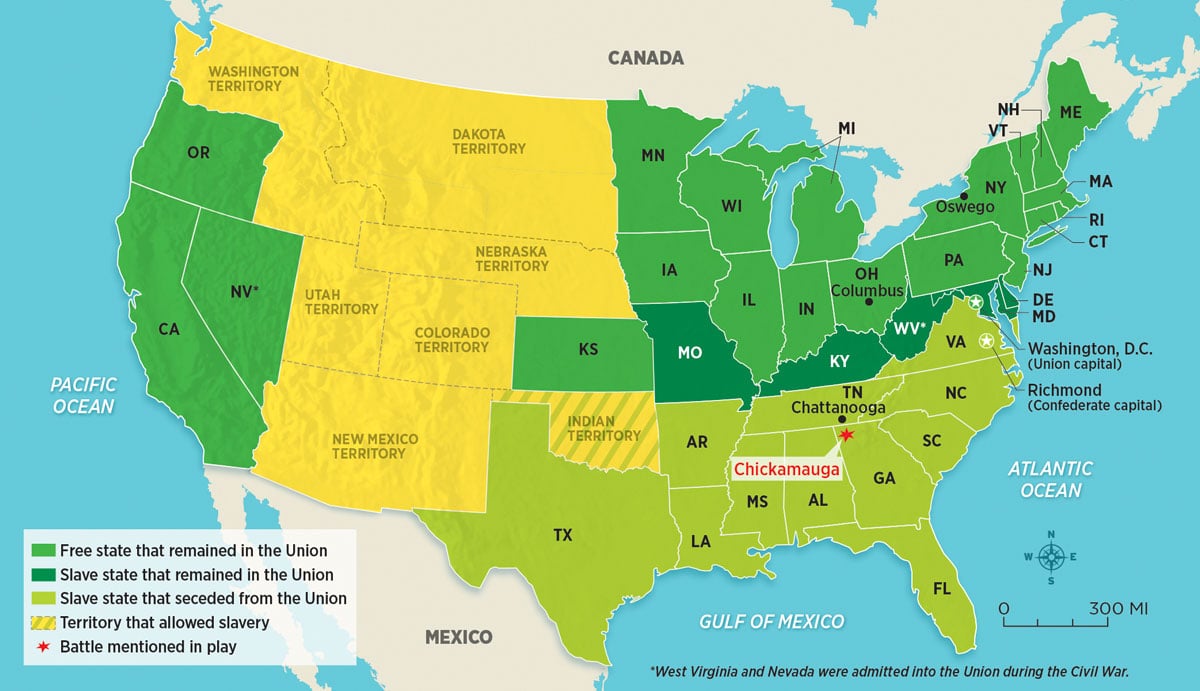Narrator B: The North has just lost a fierce, two-day battle at Chickamauga, Georgia. Thousands of wounded Union troops are pouring into a field hospital at nearby Chattanooga. No one has time to care that one of the surgeons is a woman.
Walker (writing home): You would not believe how awful it is here. Men are crowded together in the filthiest of conditions. Blood and mud are everywhere, and the tents offer little shelter. Doctors are so busy that few take time to figure out the best treatment for each soldier. If he’s wounded in the arm or leg, they just chop it off and go on to the next man. The sawed-off limbs are tossed in big piles, to be taken away later. I disagree with this practice. I believe we could save most boys’ limbs, but I seem to be in a minority in thinking this way.
Narrator C: Walker usually dresses just like the men: in a blue jacket with brass buttons, blue pants with a gold stripe down the side, and a green surgeon’s sash. When she has time, she rides into the countryside to treat civilians—mostly Southern women and children. Everywhere she goes, people gossip and stare. But the need for medical aid is so great that most people accept her help. In April 1864, as she is crossing enemy lines to help civilians . . .
Confederate soldier: You! Halt!
Walker: I’m a doctor. Folks at that farm need medical attention.
Soldier: That’s what you say. Come with me. I’m taking you prisoner.
Walker (angry): How dare you!
Soldier: Ma’am, you’ve ridden from the other army’s side to ours way too often. You must be a spy!
Narrator D: Walker is sent to a prison in Richmond, Virginia.
Walker (writing in her diary): My room is tiny and airless, and the food is awful. But what’s worse is that they won’t let me treat the sick and wounded. There are so many!
Narrator E: In August 1864, Walker is freed in a prisoner exchange. She renews her efforts to win official army status. At last, on October 5, 1864, she is granted a commission as an assistant surgeon, and major, in the U.S. Army.







